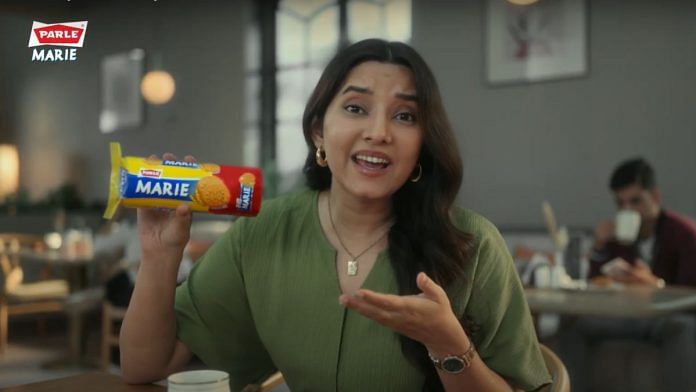Some brands are so iconic that they have become synonymous with the entire category — Colgate with toothpaste, Fevicol with white adhesive, and so on.
Now, in what seems like a rather desperate attempt to project itself as a supra brand in the Marie biscuit space, Parle has released a new ad campaign.
Unfortunately, its latest campaign comes off as forced—poor creatives, relying heavily on weak puns.
The TVC presents the everyday scenarios where asking for a Marie biscuit leads to unexpected confusion, which ends up being unpleasant to the ears.
The 25-second commercials—set against everyday backdrops like a kitty party, a grocery store, and a family home—drive home the message that there is only one Marie biscuit worth asking for, and that is, Parle Marie.
The ads show people unable to grasp what exactly Marie is, unless the ‘Parle’ tag is attached to it.
Through the campaign, Parle aims to boost its brand recall in the category, distinguish itself from generic Marie options, and reinforce its presence in an increasingly crowded market.
“With this campaign, we’re taking a confident step forward to strengthen top-of-mind recall. The idea was to bring out a universal consumer insight in an engaging and humorous way, while clearly reinforcing that when it comes to Marie, it has to be Parle Marie,” said Mayank Shah, Vice President, Parle Products.
The Marie biscuit
The Marie biscuit, made with wheat flour, vegetable oil, and vanilla, was created in a London bakery as a tea biscuit.
Today, apart from Parle Marie, there are three more prominent brands — Britannia has Marie Gold and Vita Marie, ITC has Marie Light, and DK Bakings has Nutribake Morning Marie.
Of the lot, it is Britannia’s Marie Gold biscuits that enjoy extensive consumer awareness due to the brand’s extensive advertising and promotion campaigns.
They also have the first-player advantage as they were the first ones to bring the tea biscuit to India.
Britannia initially advertised Marie Gold biscuits in India by leveraging their well-established presence as a British biscuit maker. Additionally, they focused on making the product affordable, hygienic, and long-lasting.
Also read: ‘Prashant’ trend shows how advertising is changing—influencers, meme pages hold the power
Brands larger than category
Colgate and Amul are crucial examples of how consistent branding and clever advertising can make a brand synonymous with and even bigger than an entire product category.
Colgate, for decades, has dominated the oral care market in India. The popularity is such that the brand’s name is often used interchangeably with ‘toothpaste’.
Through regular, educational advertising campaigns that created awareness around dental hygiene, Colgate established itself in the minds of Indian consumers as the best solution for oral care.
Its decision of showcasing dentists in white coats, scientific demonstrations, and catchy taglines like “Palmolive da jawab nahi” built trust and reinforced authority.
Colgate also invested heavily in rural marketing and school dental programs, ensuring it reached consumers across all demographics.
Another textbook example is Amul.
The brand carved its identity through an entirely different yet equally powerful strategy: relatability and wit.
Its iconic Amul girl campaigns became part of the cultural conversation, offering humorous, topical takes on current events, politics, and pop culture.
Phrases like “Amul – The Taste of India” and “Amul Doodh Peeta Hai India” turned it into more than just a dairy brand; it became a symbol of national identity.
Views are personal.
(Edited by Aamaan Alam Khan)







Very irritating ad I every seen in my life